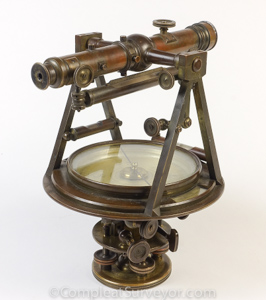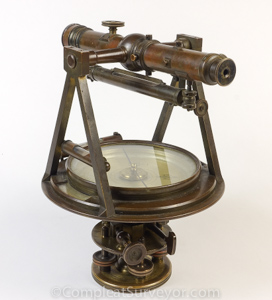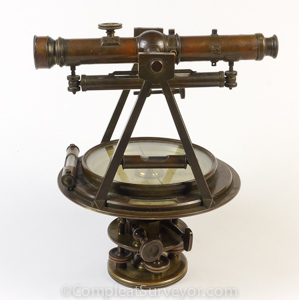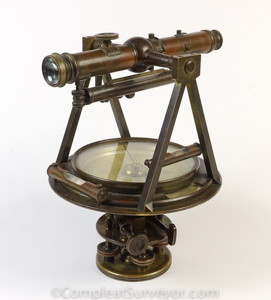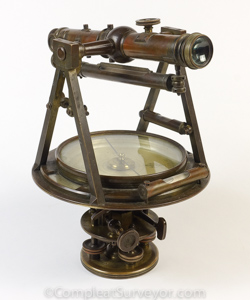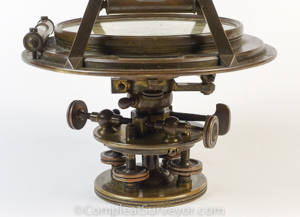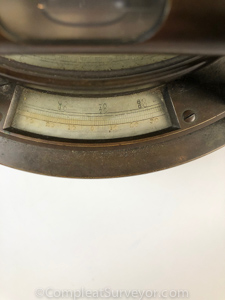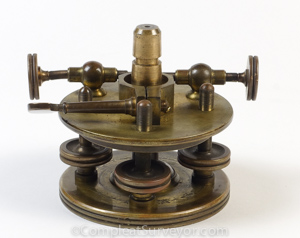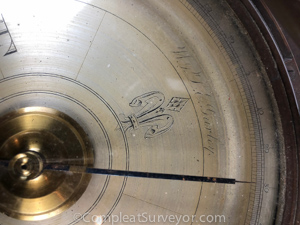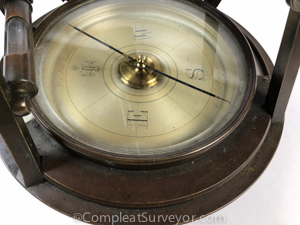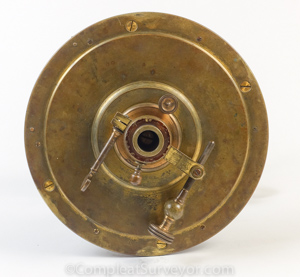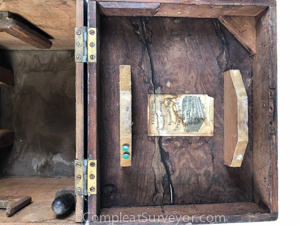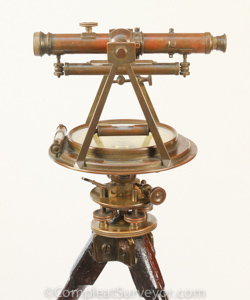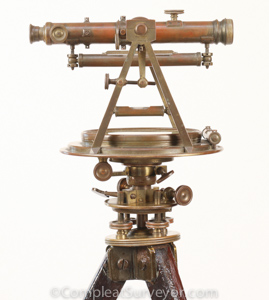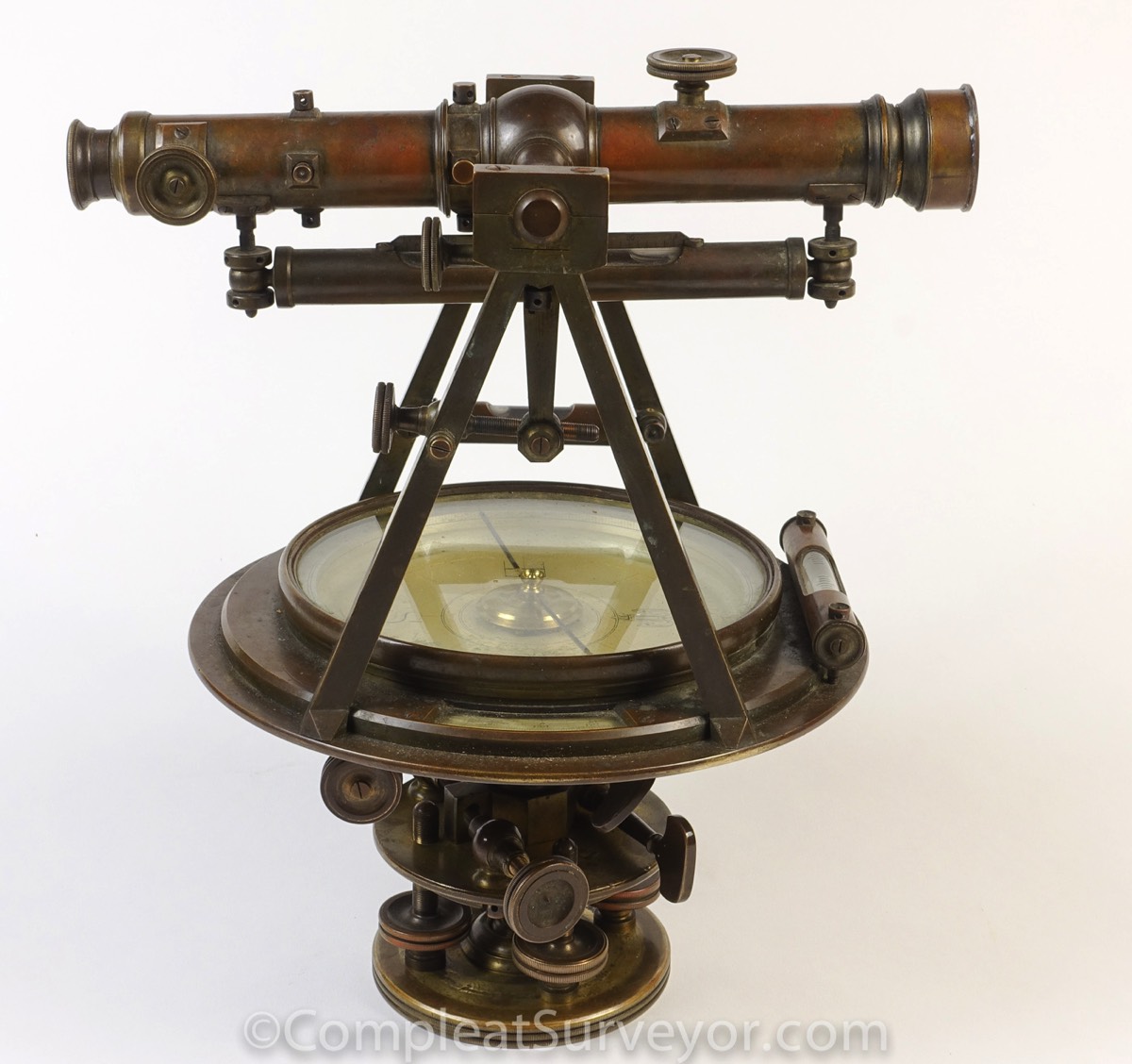
Gurley Surveyors Transit - Circa 1858
Rare Pre-1862 Surveyor's Transit - Standards and Telescope Attached to Lower Plate
Rare Design - See Rittenhouse Article by Miller "The First Surveyor's Transits 1852 to 1862". Unlike other transits, when the lower plate is clamped and the telescope rotated in the azimuth, the needle ring and and compass card remain stationary. A divided circle with verniers is attached to the upper plate, so that the angle between the upper and lower plates can be measured.
Gurley devoted 3.5 pages of their 1855 Manual to a "Surveying Transit," claiming that it had "all the excellencies of the Rail Road Compass, for surveying," and "the advantages of a Telescope, with those which arise from its attachments." The text pertaining to the rail road compass added that "The movement of the vernier plate with the sights attached around the compass circle, gives the surveyor the power of laying off the variation of the needle, while the graduated circle enables him to take horizontal angles with great accuracy, and minuteness entirely independent of the needle."
By 1856 Gurley called the instrument a "Surveyors' Transit." The accompanying text, enlarged to 6.5 pages, notes that "We made the first of our Surveyors' Transits about three years ago, and, from that time to this, have found their sale continually increasing, and those that have been in use satisfying invariably the best expectations of the purchaser." The description is still rather general, but does state that:
THE VERNIER PLATE, which carries the verniers and telescope, is made to move with perfect ease and stability, around the graduated circle or limb attached to the compass box, thus allowing the telescope and verniers, to be set to any variation of the needle, and to turn off horizontal angles in any directions.
The 1857 edition offers a surveyors' transit with a 5 inch needle, in addition to the 4-inch and 5.5-inch models listed before. It also notes that "In place of the single tangent screw, we have, in all our later instruments, substituted the double tangent movement." This refers to the opposed screws for the fine adjustment of the lower motion commonly found on the early Gurley instruments.
The text of the 1858 and 1859 editions are virtually the same, except for the addition of a paragraph describing the shifting tripod head and the deletion of the paragraph stating that the surveyors' transits first made about three years ago. In the 1862 edition the text is modified to reflect the use of a variation plate, and a conventional transit with a variation plate is illustrated.
Great Condition - Everything looks original - Tripod included - Tripod is heavily varnished - See Pics
Slightly bent screw in tripod attachment - see pics
Wonderful instrument - Great Patina
SOLD
Email Russ
© 2020 Russ Uzes/Contact Me
